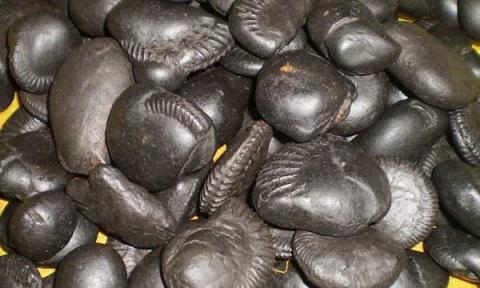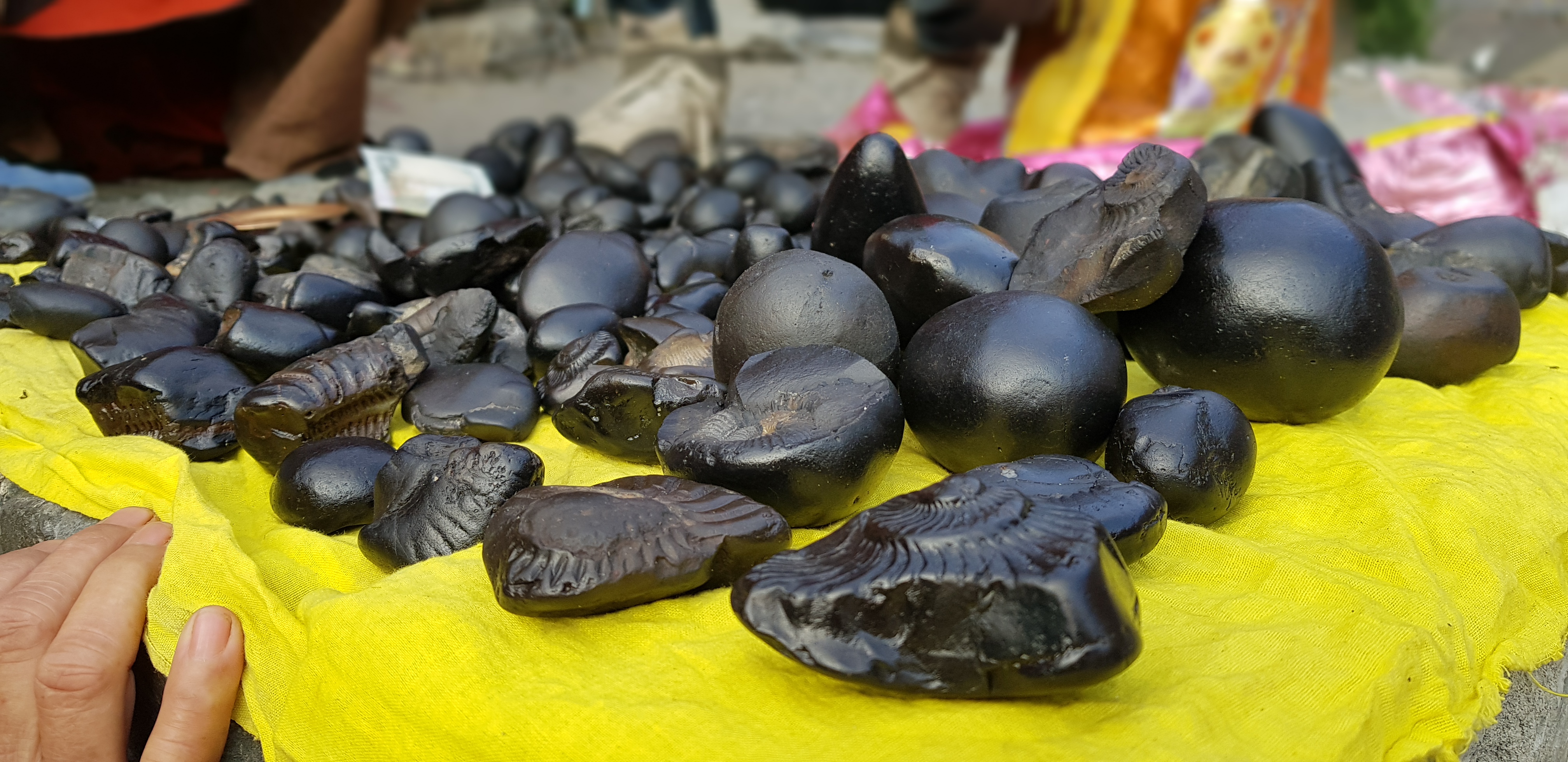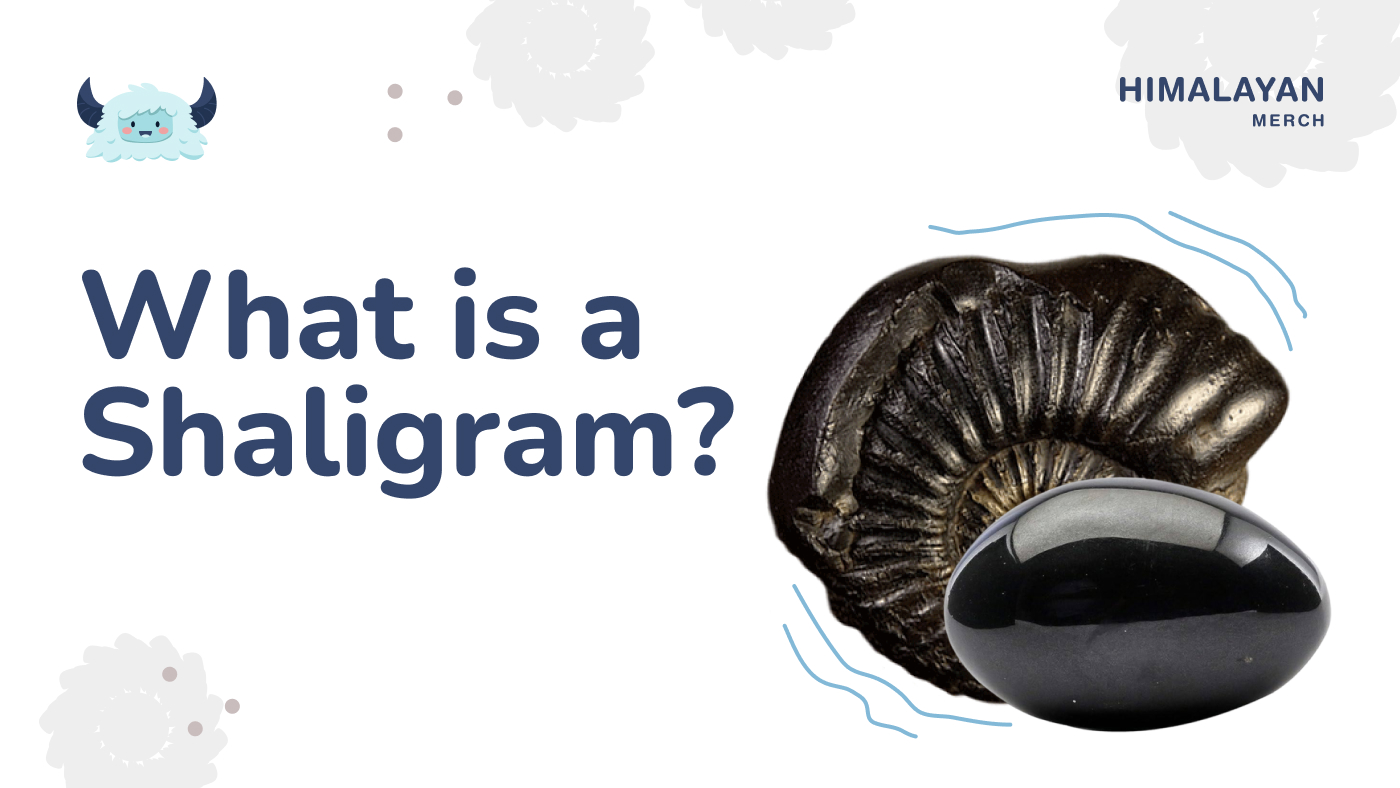Uncategorized
What is a Shaligram?
A Shaligram is a special type of black rock found in the Kali Gandaki river valley of Mustang in Nepal. The place is usually known as the Shaligramkshetra or Muktikshetra (meaning ‘Shaligram area’). According to Hinduism and Vaishnavism, Shaligram is Lord Vishnu himself in the form of a stone. This stone is also sacred to Vaishnavas (especially those who worship Lord Krishna), Hindus, and other Vishnu Bhakts all over the world. Devotees come to visit Shaligram in Setiveni on the banks of Kaligandaki as it is the largest Shaligram in the world.

The actual origin site of this Shila is Damodar Kunda lake, which lies in the lap of the Damodar Himal. This exact location of Damodar Kunda is a few days far from the Muktinath Temple. The Shaligramkshetra is extended vertically from the Northern region of the Upper Mustang to the Southern part of Nepal in Ruru (a part of the Palpa district) and the Narayani Water Course.
The science behind Shaligram
Scientifically, these Shilagram stones are solid, black-coloured Ammonoid fossils that existed for million years ago. Geologists speculate that the ancient seaborne creatures or Ammonoids of the Jurassic Era fossilized and gradually changed into stones. Millions of years ago, the Mustang territory was under the Tethys Ocean. Because of the high pressure of the weight of seawater and mega rocks, massive geological unrest occurred, leading to the creation of mountains in this area. This is why Shaligrams found in the Kali Gandaki region are considered real and sacred. They have special qualities like; density, colour, smoothness, and special shapes of chakras in the rocks. As a result, they are sought after by many pilgrims all over the world.
Where science and religion overlap is people believe that Shaligrams are the stone forms of Narayana or Lord Vishnu, and he lived in the Ocean according to religious beliefs.
Why do people worship Shaligrams?
Read: What is the Religious Significance of Shaligram
Among the many stones found in the Kali Gandaki river banks, this stone with special properties is called a ‘Shila’ instead of a stone. As people believe that Lord Vishnu grew up on the shores of the Kali Gandaki river, people from all over the world come to visit the sacred river and worship Lord Vishnu. In any temple, all over the world, Shaligram represents Lord Vishnu and if there are any statues to be made of him, they must be carved from the rare Shilagram stones.

In Hinduism, the importance and significance of Shaligrams are quoted in different Puranas. Devotees worship the stones out of respect for these sacred Puranas and follow the tradition strictly. They believe that Shaligram holds more worth than any other materials like gold, silver, etc. There are different tales and beliefs about Shaligrams in different Puranas. For example, according to the Skanda Puran, water that has touched Shaligrams transforms into Amrit (loosely translate to ‘holy nectar’). It has the ability to cure all illnesses and rid of the sins of those who drink it.
Holy rivers like the Kali Gandaki, Ganga, and the Godavari are the Amrit of the real Shaligram in Muktinath. That is why according to the Padma Puran, people who visit, see, worship, or bathe in these holy rivers will be blessed by Lord Vishnu himself. They will rid of all fears, and tensions, and protect worshippers against evil forces. Worshipping Shaligram will bring light, happiness, good health, and prosperity to the devotees. Furthermore, Shaligram is further used for meditational purposes and to achieve spiritual liberation or Siddhi.
Worshipping Shaligram at home
People conduct big rituals to worship Shaligrams or do it simply at home. Worshipping Shaligram at home requires a peaceful and pure environment. It is best to worship Shila in the morning, as it’s the time of day when you are at peace and the least in hurry. Take a bath early in the morning. Briefly clean your praying room or space and the vessels. Light a candle and illuminate incense (Agarbatti). Face Eastwards and Abhisekh the Shilagram with holy water. Ordinary water will do too. Clean the Shaligram with a clean cloth. Apply some Chandan Tika (Sandalwood Tika) and offer some Tulsi leaves or flowers to the Shaligram.
Chant Mantras like Om Namo Narayana or Om Vishnu Hari Narayan or any other Lord Vishnu Mantra that you know for a minimum of 21 times or 108 times at most. Ask what your heart desires and make wishes if you have any. Remember to pray with a pure soul and an alert mind. It is best to worship Shaligram daily or whenever you have time.
Benefits of worshipping Shaligram
There are hundreds of benefits of worshipping Shaligram. People worship Shaligram Shila for health, wealth, prosperity, and spiritual blessings. Other than these, there are more benefits of worshipping Shaligram at home or in temples.
- It protects you from negative energy and wards off evil spirits.
- Brings happiness and prosperity into your life
- Removes obstacles and bad luck in life
- Blesses with health and wealth
- Brings good fortune and luck in life
- Unites your family
- Removes Vishnu Dosha
- Removes Kundali Dosha
- Brings success
Worshipping Shaligram brings many benefits and advantages to you and your family. It is important to make sure you are worshipping a real Shaligram and not a fake stone. Worshipping a fake stone will not bring any goodness and fortune as worshipping a genuine Shaligarm. Therefore it is important to purchase real Shaligram.
How to identify real Shaligram?

Because Shaligrams are widely popular and worshipped all over the world, people sell fake stones made of concrete and paint them black. Very few people sell original, genuine Shaligram stones. Although it can be difficult to identify the real stones from the fake ones, there are a few things to look for.
Shaligrams are irregular in shape and size because of nature. So, if someone is selling you stones of incredibly regular and same shapes, they are not real. Shaligram Mala (garlands) are also popular these days. But these are not genuine Shila as it is not possible to find stones of regular sizes and holes drilled in them. Some people also sell Shaligram Shila with gods carved in them. Although they can be real, it takes away from the natural and sacred nature of the stones when people carve art in them.
Real Shaligram stones are rock-solid, black, smooth, and come in different shapes and sizes. In fact, Shaligram Shila comes in different colours like yellow, blue, white, and, even red. They are rare and equally holy as black Shila. However, different coloured Shilas are worshipped for different purposes. Like dark Shilas are accepted and worshipped widely everywhere; in temples or homes. Whereas, red Shilas are more suitable for temples only.
No matter the colour or the number of Shaligram you worship, do it with good intentions and with respect. Since it is hard to handle and maintain, you can consult experts and priests at temples before buying Shaligram. They will also help you identify reak Shila from fake ones.




